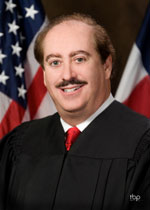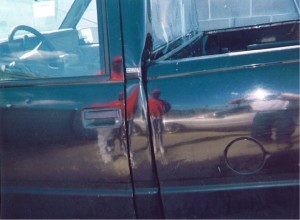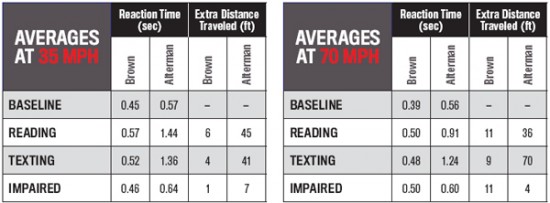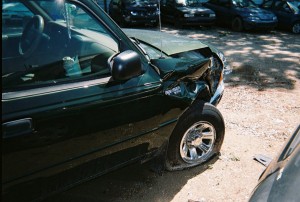Last week the Texas Supreme Court issued an opinion in the case Aaron Glenn Haygood v Margarita Garza De Escabedo that will have a profound effect on many personal injury lawsuits in Texas. The opinion is available online here. Before we discuss the Escabedo opinion, here is a little background to set the stage…
In 2003 the Texas legislature, as part of a sweeping round of tort reform, enacted a new statute: section 41.0105 of the Texas Civil Practice & Remedies Code. The statute reads as follows: “In addition to any other limitation under law, recovery of medical or health care expenses incurred is limited to the amount actually paid or incurred by or on behalf of the claimant.” Since taking effect September 1, 2003 that one sentence long statute has caused all manner of confusion in the area of personal injury litigation in Texas.
The way the statute came to be interpreted by the majority of Texas courts was that in a personal injury lawsuit where the injured person’s medical bills were paid (in whole or in part) by health insurance, the defendant who caused the plaintiff’s injury was only required to pay the plaintiff the amount paid by health insurance, plus any co-pays and outstanding balance, and was NOT required to pay the plaintiff the amount the plaintiff was billed by her medical provider. Here are two examples:
Scenario A, prior to CPRC Sec. 41.0105 being enacted: Dan Defendant rear-ends Paul Plaintiff at a red light. Paul goes to the hospital for treatment and the hospital bills Paul $1,000. Paul has private health insurance. The health insurance company pays the hospital $500. Paul has a co-pay of $100. The remaining $400 of Paul’s bill is written-off by the hospital as a discount to Paul’s health insurer, who has a pre-negotiated rate with the hospital. Dan owes Paul the $1,000 that the hospital billed Paul. If Paul has to repay his health insurer the $500 they paid on his behalf (as commonly happens), and Paul is reimbursed the $100 co-pay he paid, then there is a $400 upside. That upside goes to Paul. Prior to CPRC 41.0105 the reasoning was, if an upside should go to anyone it should go to the injured plaintiff, rather than allowing the negligent defendant to benefit from the plaintiff’s private health insurance.
Scenario B, after CPRC Sec. 41.0105 was enacted: Dan Defendant rear-ends Paul Plaintiff at a red light. Paul goes to the hospital for treatment and the hospital bills Paul $1,000. Paul has private health insurance. The health insurance company pays the hospital $500. Paul has a co-pay of $100. The remaining $400 of Paul’s bill is written-off by the hospital as a discount to Paul’s health insurer, who has a pre-negotiated rate with the hospital. Dan owes Paul $600: the $500 paid by Paul’s health insurance company plus Paul’s $100 co-pay. After CPRC 41.0105 was enacted the ultimate effect of the statute was to allow a defendant to benefit financially from having the good fortune to hit a Plaintiff who had private health insurance.
So….CPRC 41.0105 (often referred to as “paid versus incurred”) limited the amount of money a plaintiff could recover for past medical bills when the plaintiff’s health insurance paid their bills. But: did the statute limit what evidence of medical bills the plaintiff could present to the jury? Could the plaintiff present the jury evidence of the full amount the hospital billed, or could the plaintiff only present the jury with the amount paid by health insurance, plus co-pays and balances owed? Prior to the Texas Supreme Court issuing the Escabedo decision last week, the answer was “We’re not sure.” After the Escabedo decision, the answer is: a plaintiff may only present a jury with the amount paid by health insurance, plus co-pays, plus balances owed, and MAY NOT present the jury with evidence of the amount that was originally billed by the hospital (or other medical provider).
Prior to Escabedo what most civil trial judges in Texas did was to allow the plaintiff to present the jury with evidence of the full amount billed by medical providers, and if the jury awarded the past medical bills in full, the defendant could make a motion with the court post-verdict to reduce the award of past medicals to the amount paid by health insurance, plus co-pays, plus balances owed. After Escabedo however, personal injury Plaintiffs must now redact their medical bills to remove evidence of the full amount charged by the medical provider, and also (presumably) remove evidence of any health insurance write-offs or discounts.
If you have followed along this far you may be thinking: so what? If all the plaintiff can recover is the amount paid by health insurance, plus co-pays, plus balances owed, what does it matter if that is all the jury hears evidence of? Well it actually does matter, and here’s why. Firstly Escabedo sets up a bizarre situation where two plaintiffs sitting next to one another in the back seat of a car rear-ended by a defendant get to put on significantly different evidence of past medical expenses at trial if one plaintiff has health insurance and the other does not. Here’s an example to illustrate:
Plaintiff Alpha is sitting in the right hand side rear seat of a car. Dan Defendant rear-ends the car. Plaintiff Alpha is taken to Memorial Hermann who bills Plaintiff Alpha $1,000 for their services. Alpha has health insurance with Blue Cross Blue Shield. BCBS pays Memorial Hermann $400. Alpha has a $150 co-pay. The remaining $450 is written off by Memorial Hermann as an HMO discount per Memorial’s agreement with BCBS. Alpha gets to present the jury with evidence of $550 of past medical bills at trial.
Plaintiff Bravo is sitting in the left hand side rear seat of the same car. Dan Defendant rear-ends the car. Plaintiff Bravo is taken to Memorial Hermann who bills Plaintiff Bravo $1,000 for their services; by coincidence Bravo gets the very same treatment and diagnostic tests Alpha gets. Bravo has no private health insurance so his bill remains unpaid until the lawsuit over the car accident goes to trial. Alpha gets to present the jury with evidence of $1,000 of past medical bills.
Same accident, same hospital, same treatment, same original billed amount, same jury, same trial, but Alpha and Bravo get to present different evidence of damages for past medical expenses to the jury. When it comes to presenting evidence of past medical bills, the Escabedo decision creates two classes of Plaintiffs: those with health insurance and those without.
Here is another reason this matters: rightly or wrongly, juries are known to use the amount of a personal injury plaintiff’s medical expenses as an index or guide when trying to decide how much to award for “general damages.” General damages include what are commonly referred to as “pain and suffering” damages, which would include physical pain, mental anguish, physical impairment and disfigurement.
Say a personal injury plaintiff sustained a severe back injury after being rear-ended by an overloaded 18-wheeler and had to have a lumbar fusion procedure. Factoring in the cost of hospital admission, anesthesia, hardware and surgeon’s fees, a major procedure such as a lumbar fusion can routinely cost in excess of $100,000. However, due to pre-negotiated rates health insurers have with hospitals, surgeons, anesthesiologists and other medical providers, the amount ultimately paid for a $100,000 back surgery, factoring in patient co-pays and the amount paid by health insurance, may be closer to $30,000.
If a jury is presented with $100,000 or more in past medical bills for a plaintiff who had a major back surgery and whose spine will never, ever be the same again, and who cannot pursue the hobbies or family activities he or she once enjoyed pain-free, it is a less daunting task to ask that jury to award $100,000 for pain and suffering than if the jury heard evidence of $30,000 in past medical bills.
If the jury heard evidence of the $100,000 the plaintiff was billed by his doctors for the back surgery (as the jury would have pre-Escabedo) an award of $100,000 for pain and suffering would be an award that was the same amount as the past medical bills. If on the other hand the jury heard evidence of $30,000 in past medical bills (as the jury will after Escabedo) an award of $100,000 for pain and suffering would be more than three times the amount of past medical bills (at least, that’s how it would appear to the jury).
Escabedo was a 7-2 decision by the Texas Supreme Court. The opinion was written by Justice Nathan Hecht and upends long-standing Texas jurisprudence that a negligent defendant who injures a plaintiff should not benefit from that plaintiff’s private health insurance. Escabedo is a big win for liability insurance companies in Texas and it will undoubtedly save them millions of dollars annually that would otherwise have gone to injured Texans and their families.
So if a drunk driver slams into you and your family late one night in Houston and you’re rushed to the hospital, go ahead and turn over your health insurance card as soon as you get to the emergency room. Just think about all the money you can save the drunk driver or his insurance company, not just on past medical bills, but also on your pain and suffering damages at trial when the jury is presented with evidence of a fraction of the amount the hospital charged to treat you and your family.











